What is a Shoulder Labrum tear?
A shoulder labrum tear refers to an injury to the labrum, a ring of cartilage that surrounds the socket of the shoulder joint (glenoid). The labrum helps stabilize the shoulder joint and provides attachment points for ligaments and tendons, contributing to shoulder strength and function.
What are the symptoms?
Symptoms of a shoulder labrum tear may include:
- Shoulder pain, particularly with overhead movements or lifting.
- Catching or locking sensation in the shoulder joint.
- Feeling of instability or looseness in the shoulder.
- Decreased range of motion.
- Weakness in the shoulder.
- Audible popping or clicking sounds with shoulder movement.
What causes a Shoulder labrum tear?
A shoulder labrum tear can result from various factors, including:
- Traumatic injuries, such as a fall onto the shoulder, direct blow to the shoulder, or forceful overhead motion.
- Repetitive overhead activities, such as throwing, swimming, or weightlifting, which can gradually wear down the labrum over time.
- Degenerative changes associated with ageing, arthritis, or joint instability.
- Structural abnormalities in the shoulder joint, such as a shallow or irregularly shaped glenoid socket.
What are the treatment options?
Non-Surgical treatments Available for Shoulder Labrum Tear:
Non-surgical treatment options for a shoulder labrum tear may include:
- Rest and activity modification: Avoiding activities that exacerbate symptoms and giving the shoulder time to heal.
- Physical therapy: Rehabilitation exercises to strengthen the muscles surrounding the shoulder, improve stability, and restore range of motion.
- Pain management: Over-the-counter or prescription medications, such as NSAIDs or corticosteroid injections, to alleviate pain and inflammation.
Surgical treatments Available for Shoulder Labrum Tear:
Surgical treatment for a shoulder labrum tear may be considered if conservative measures fail to provide relief or in cases of severe or symptomatic tears. Surgical options may include:
- Arthroscopic labral repair: Minimally invasive surgery to reattach the torn labrum to the glenoid socket using sutures or anchors.
- Labral debridement: Removal of the damaged portion of the labrum if repair is not feasible.
- Bankart repair: Surgical repair of a specific type of labrum tear (Bankart tear) associated with shoulder instability.
What are the potential risk factors and complications?
While shoulder labrum tear surgery is generally safe, potential risks and complications may include:
- Infection at the surgical site.
- Bleeding or blood clots.
- Nerve or blood vessel injury.
- Persistent pain or stiffness.
- Delayed healing or re-tears of the repaired labrum.
- Adverse reactions to anaesthesia or surgical complications.
What does the recovery process include?
Recovery from shoulder labrum tear surgery varies depending on factors such as the extent of the tear, type of surgery performed, and individual healing factors. Generally, recovery may involve:
- Immobilisation of the shoulder with a sling or brace immediately following surgery to protect the repair and promote healing.
- Physical therapy or rehabilitation exercises to gradually restore strength, stability, and range of motion of the shoulder joint.
- Gradual return to activities and sports, following the guidance of healthcare providers and rehabilitation specialists.
- Full recovery may take several months, with some individuals requiring ongoing management to prevent recurrent symptoms or complications.




